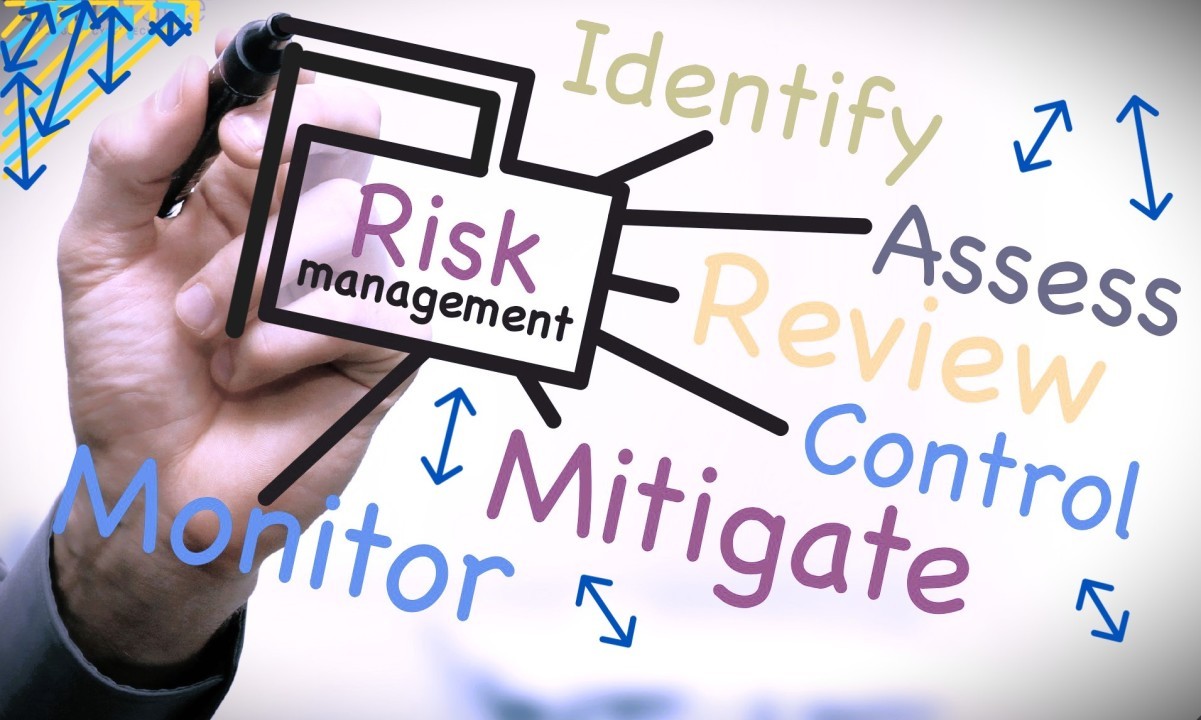Foreign exchange trading, despite offering significant profit opportunities for many investors, often comes with a certain level of risk and challenges. In this highly potential and fiercely competitive financial market, some succeed in accumulating substantial wealth, while others face devastating losses. The astonishing ratio is 3:7, meaning that 70% of traders are in a losing position in foreign exchange trading. Many may find themselves perplexed, not understanding why their forex trades result in losses.
To comprehend why forex trading leads to financial setbacks, we need to delve into the complexities and risk factors involved. Join us in exploring the potential challenges within the forex market to better understand the issues faced by traders. For more information, please visit wikifx.com or download the WikiFX app to continue your journey of exploration.
Three Major Factors Affecting Forex Traders
The initial 12 months of any forex trader's journey are undoubtedly the most daunting, as investors need to quickly catch up to succeed. The challenge lies in the fact that mastering the market is easier said than done, as certain challenges faced by traders can impede this progression. These challenges, you'll find, are a mix of psychological and environmental factors hindering your advancement.
Psychological Factors
The reality is that over 95% of traders lose their entire forex investment capital within the first six months, as the market is undoubtedly unforgiving. Part of the reason for this situation is that some still see forex trading as a get-rich-quick scheme.
Psychological factors can be summarized into two extremes: greed and fear.
Let's start with greed. The mindset of taking unnecessary risks can be a psychological barrier for novice forex traders. Some investors, right from the start, take on incredible risks, believing that “all risk, all reward” is the right approach. While there may be occasional opportunities to profit using this strategy, the harsh reality is that luck in the forex market is finite, and greed can lead to long-term damage.
In contrast to greed, fear is also a significant challenge for traders. With every trade, there's a certain level of financial risk, and due to the leverage in forex trading, it can result in losses exceeding the initial investment. If new traders cannot face the risks and overcome the fear, making rational decisions becomes impossible. Fear may also lead to missing opportunities, and if left uncontrolled, it can be quite destructive, preventing traders from taking necessary actions to expand, diversify, and develop a profitable forex investment portfolio.
Of course, a more prudent approach is to strike a balance between greed and fear, or even better, to go against human nature. As Warren Buffett aptly put it, “Be fearful when others are greedy, and be greedy when others are fearful.”
Financial Factors
Certainly, the greatest challenge traders face is a proper understanding of the vast scale and intricacies of the forex market. Whether you're a part-time, full-time, or casual trader, underestimating the market's power and varying degrees of volatility is the worst mistake one can make.
The complexity of the forex market can be comprehended from an economic and political perspective. Firstly, the interconnectedness of global economies makes the forex market a crucial platform for international trade and investment. Economic data, policy changes, and geopolitical events directly impact currency values. Political decisions, such as interest rate adjustments or the signing of trade agreements, have profound effects on the forex market. Additionally, global political turmoil and strained international relations can trigger market fluctuations. The intersecting interests and competitive relationships on the international stage make the forex market a complex arena, demanding cautious navigation from traders well-versed in global economic and political dynamics.
Environmental Factors
Apart from the psychological factors during trading and the significant challenges inherent in the forex market itself, you also need to confront a fundamental question—how to determine your position.
You should carefully consider how much time you can commit to forex trading. Can you trade around the clock? Are you willing to make it a full-time commitment? Or is it just for entertainment? Ask yourself these questions to determine your level of commitment, budget, and the time it will occupy. Different psychological expectations lead to entirely different trading experiences.
Therefore, if you want to make it a profitable venture, you need to delve into the intricacies of forex, appreciating the potential complexity of what you are engaging in. In trading, you need to constantly refine your trading skills, employ mature trading strategies, and be well-prepared because the forex market, operating 24 hours a day, won't wait for you to wake up before trading.

8 Common Reasons for Losses in Trading
1. Weak Risk Awareness
This stands as a primary cause of losses for many traders, as risk is omnipresent in all investments. Considering the unique leverage nature of forex investments, effective risk management is even more crucial. If you disregard risk and focus solely on making profits, you might experience occasional successes, but over time, a few significant losses could wipe out earlier gains. Therefore, it's imperative to establish profit-taking and stop-loss points right from the beginning, setting a limit on potential losses to control risk and maximize steady profits.
Moreover, a lack of risk awareness is evident in the choice of unreliable platforms. If a platform is not trustworthy, any investment endeavor becomes a joke, especially considering the direct risk of the platform absconding with funds. In such scenarios, investors are left with no viable investment options.
2. Trading at Low Risk-Reward Ratios
Despite recognizing the importance of risk, many traders often find themselves engaged in trades with low risk-reward ratios, rendering these transactions less viable. For instance, consider Trade A, where there's a 90% chance of gaining $100 and a 10% chance of losing $10. On the other hand, Trade B offers a 50% chance of gaining $100 with a 50% chance of neither gaining nor losing. When faced with a choice between these two trades, some investors might opt for Trade B due to its apparent stability, as it guarantees no losses. However, in reality, Trade A has a higher probability of yielding greater returns. Similar to overlooking trading risks, continuously engaging in low-risk, low-reward trades might lead to initial gains, but once losses occur, there's a risk of eroding previous profits.
3. Unscientific Money Management
Managing funds is a challenging task for many investors, and it is evident that a significant portion of forex traders prefers engaging in heavy position sizing, which is essentially an unscientific approach to money management. Heavy position sizing not only restricts other forex trading opportunities but also exposes traders to substantial losses when their investment judgments go awry.
The correct approach is to gradually and steadily win the forex trading game. For instance, if you're conducting micro lot trades, starting with $1000 is a reasonable entry point. Otherwise, you risk plunging yourself into potential disasters. If you lack sufficient capital, it may be worth saving until you have the necessary funds. In the meantime, hone your skills through a demo account and forex educational materials until you are ready to commence live trading.
For novice forex traders, the risk per trade should not exceed 1% of their capital. Using more than this amount increases the likelihood of significant losses. As you become a more experienced trader, you can consider raising this percentage to 2%, but it's crucial never to invest a substantial amount of capital in a single trade.
4. Lack of Trading Strategy
Developing an effective trading strategy is not something to be taken lightly. This has resulted in numerous traders in the market resorting to blind decision-making, often relying on subjective judgments to execute trades. For these traders, forex trading can resemble a form of gambling, making it challenging to achieve consistent profits over time.
The correct approach involves utilizing various technical signals to identify highs and lows, interpreting trend patterns through technical indicators, and establishing clear guidelines on when to enter and exit trades. This includes defining your minimum risk-reward ratio and determining the percentage of your account value you are willing to risk. Always bear in mind that becoming a successful trader requires a continuous ability to generate profits in the forex market.
Consistency is key to success in forex trading. Only when you cultivate discipline and good habits, continually applying and understanding your trading strategy and its related factors, will you experience the desired outcomes. Success in forex trading hinges on your ability to trade reliably through the application and comprehension of your trading strategy.
5. Utilizing High Leverage
Many investors aspire to amplify their returns through high leverage, hoping it will multiply their profits. However, what they often overlook is that high leverage is a double-edged sword. While used wisely, it can indeed boost an investor's earnings, in the absence of proper trading skills and other unfavorable factors, it has the potential to magnify losses and quickly deplete an investor's capital.
For instance, many novice forex traders are drawn to the market with the expectation of attaining substantial profits rapidly, driven by a need for additional income. Exploiting this mindset, forex marketers encourage beginners to engage in high-leverage trading, promising significant returns with minimal initial capital, thereby exacerbating the situation.
This is not to say that leveraging the forex market is inherently bad. In fact, it is one of the powerful advantages the market offers to forex traders. Using leverage judiciously can indeed allow you to achieve more with less effort. However, it is crucial to exercise caution, understanding the risks involved, and ensuring that the application of leverage aligns with your risk tolerance and trading strategy.
6. Lack of Patience
A lack of patience poses a significant obstacle to profitability in forex trading. Opportunities in the forex market may arise only a few times a day and disappear in an instant. Without patience, investors are prone to trading at the wrong times, ultimately resulting in losses.
7. Constantly Monitoring the Account Post-Trade
Some investors have the habit of continuously monitoring their accounts after making trades, watching profits fluctuate. This not only wastes time but also increases anxiety, making investors more prone to mistakes. Overly nervous traders are at risk of making errors in judgment, which can lead to losses. While it's challenging to completely disregard decisions made, gaining this ability requires prolonged experience. As a starting point, adhering to the established trading strategy and ensuring that the logic aligns with expectations can help, allowing traders to leave the judgment of trade success to the market.
8. Manual Trading without Automated Order Placement
Certain investors, for various reasons, still prefer manual trading, which can cause them to miss profitable opportunities. Whether due to network delays or the trader's own operating speed, manual trading can result in the final outcome deviating from the investor's intentions, often leading to losses. Relying on the automated order placement features of reputable platforms can enable 24-hour market monitoring, preventing missed opportunities during sleep or network disruptions.

How to Establish an Effective Trading Strategy?
For every trader, having a comprehensive trading strategy is crucial in actual trading. This allows for measurable and consistent profits, as opposed to gains that are merely speculative and may not withstand the test of time. However, creating an effective trading strategy is not always the simplest task, as it requires a significant amount of thought and foresight. An effective trading strategy often necessitates years of live trading, continuous review, and analysis to be developed. Based on research findings from experts and practical experiences of traders, we have summarized the key steps in establishing a forex trading strategy. You can tailor these steps to create a strategy that aligns with your requirements, and most importantly, rigorously adhere to it:
1. Determine Your Trading Timeframe
When engaging in forex trading, it's crucial to identify the type of trader you are. Do you prefer engaging in swing trading or day trading? Are you inclined towards analyzing charts and data comprehensively, or do you prefer going with the flow? What is your preferred holding time, and how active do you consider yourself? Answering these questions will assist you in determining a suitable trading timeframe, which will form the foundation of your forex trading strategy.
For instance, a day trader in South Africa may find it profitable to operate between 9 a.m. and 4 p.m. local time, aligning with the London and New York trading sessions. During this period, the forex market experiences the highest volatility and liquidity, offering ample opportunities for South African day traders. Tailoring your trading hours to your trading style and market conditions is essential for optimizing your forex trading strategy.
2. Filtering
When engaging in forex trading, a barrage of information from various sources bombards you due to the constant fluctuations in currency pairs worldwide. However, not all advice is sound, especially when executing trades. Information that is irrelevant to the main trend or has a minimal impact is often referred to as noise. Filtering out this noise is crucial as your forex trading strategy takes shape.
For instance, for a swing trader, certain short-term events may cause temporary fluctuations but won't necessarily affect the long-term trend. To illustrate, let's look back at the USD's performance in the latter half of 2023. Due to the hawkish rate hikes by the Federal Reserve, the U.S. dollar's interest rates outpaced those of G10 currencies, attracting substantial foreign capital into the U.S., leading to a strong dollar. This was the primary trend during that period. Even amid unfavorable economic data such as rising unemployment rates and declining GDP, as long as the Fed maintained its hawkish stance, it did not impede the upward trajectory of the U.S. dollar. It was only in November, when the Fed adopted a dovish stance, that the U.S. dollar started to decline.
3. Simplify:
When jotting down your strategy on paper, seek insights from experienced traders and respected forex analysts who have witnessed and achieved success in the forex trading domain. While cautioning against blind adherence, you can certainly glean valuable information to bolster your efforts in forex trading.
4. Long-Term Goals
While many traders profit from short-term market fluctuations, it's crucial to prioritize considerations of longer-term scenarios when initiating and formulating strategies. Short-term data often comes with speculation and noise, impacting novice traders' judgments and not always reliable for precise market predictions.
5. Fundamental Analysis
Although technical analysis largely relies on deciphering internal forex market factors (such as the number of active buyers and sellers) to determine potential market directions, you cannot solely base your forex trading strategy on these factors. Despite sounding unconventional, you need to go beyond numbers. The forex market is strongly influenced by real-world events, as everything from growth data to changes in interest rates affects currency performance. When formulating forex strategies, conduct extensive fundamental market analysis to understand future trends in forex.
6. Tools
With a basic forex trading strategy in place, you can further implement it using various forex trading tools. The right tools come in diverse forms and can indeed elevate your output to a new level, ensuring every trader better controls their investment portfolio. Automated trading allows round-the-clock trading, automatically executing trades based on preset criteria, enabling individuals to formulate plans based on facts, data, and statistics.
For those seeking guidance in the right direction during trades, market indicators (often combined with signal-based services) can be invaluable. Alerting subscribers to what's happening in the market and potential trends, the right signal service can help you stay one step ahead in the game.
7. Risk Management
As mentioned earlier but worth repeating, no trader can manually monitor the market 24/7. Therefore, for the sake of risk management, you should set stop-loss orders for your open positions when you are absent. These orders automatically sell your currency when it reaches a certain level, regardless of your presence. Limiting losses and locking in profits, using stop-loss correctly can plug any holes in your forex trading strategy and act as an additional layer of protection. Additionally, using the auto-order placement feature to open positions is also a good choice. When the target product price falls below the preset level, the machine will automatically place an order for you to buy. Properly utilizing the broker's auto-order placement feature will double the security of your forex trading stability.
8. Testing
After completing all actions and formulating your forex trading strategy, you need to test its effectiveness. Since you are a forex trading novice, trading with real money is certainly unwise. By using a demo account, you can test the progress of your forex trading strategy, address any issues, and make modifications in the process. Formulating your own forex trading strategy is crucial as it can meet your investment needs; testing it in a virtual environment allows you to truly shape basic methods into effective ones.
9. Review
Lastly, for a true understanding of the effectiveness of your forex trading strategy, it is highly recommended to conduct performance tracking. Through performance tracking, you can discern what works and what doesn't, observing hard data to adjust your forex trading strategy to ensure ongoing success.
Risk Management Strategies in Forex Trading
Risk management is a crucial component of a forex trading strategy. Let's delve into discussing the main principles of risk management. While risk management rules can't entirely eliminate losses, they serve to cap a trader's exposure to risk. It's essential to remember that losses are inherent in trading, but by implementing effective risk management strategies, traders can mitigate potential damages. Such practices act as a safeguard, allowing traders to navigate the unpredictable nature of the market with more control and resilience, fostering a disciplined and calculated approach to trading. It is imperative to bear in mind a few key principles:
1. Proper Understanding of Involved Risks:
Before engaging in forex trading, it is crucial to have a thorough understanding of the various risks inherent in the market, including currency fluctuations, geopolitical events, and economic indicators.
2. Utilize Stop-Loss Orders for Risk Management:
Stop-loss orders act as a safety net by automatically closing a trade at a predetermined level, limiting potential losses and ensuring that losses are kept within acceptable parameters.
3. Refrain from Further Risks if Unable to Tolerate More Losses:
It's essential to assess your risk tolerance and refrain from taking additional risks if your capacity to absorb further losses is limited. Prudent risk management involves knowing when to step back from the market.
4. Limit Leverage Ratios within Risk Management:
While leverage can amplify profits, it can also magnify losses. Therefore, it's important to set limits on leverage ratios to prevent excessive exposure and potential financial turmoil.
5. Maintain Realistic Profit Expectations in Risk Management:
Unrealistic profit expectations can lead to impulsive and high-risk decisions. Establishing realistic profit goals aligned with market conditions is integral to effective risk management.
6. Incorporate Take-Profit Orders in Forex Trading:
Take-profit orders allow traders to secure profits automatically when a predetermined level is reached, preventing the possibility of losing gains due to market reversals.
7. Have a Well-Defined Trading Plan:
A comprehensive trading plan should outline entry and exit points, risk-reward ratios, and overall strategies. A well-structured plan helps traders stay disciplined and focused on risk management.
8. Always Prepare for the Worst:
Contingency planning involves considering worst-case scenarios and having strategies in place to mitigate potential losses. Being prepared for adverse situations is a key aspect of risk management.
9. Diversify Your Investment Portfolio:
Diversification involves spreading investments across different currency pairs and asset classes to reduce overall risk. A diversified portfolio can help offset losses in one area with gains in another.
10. Control Your Trading Emotions:
Emotional decision-making can lead to impulsive actions and increased risk. Developing emotional intelligence and maintaining a disciplined approach to trading contribute significantly to effective risk management.

Disclaimer
Traders need to understand and remember that Contracts for Difference (CFDs) are leveraged and complex products, which may involve the risk of incurring losses exceeding the trader's initial deposit. Traders must ensure that they comprehend their own risk exposure and should assess whether the risks involved are suitable for them before making trading decisions that could potentially lead to capital losses.
Bottom Line
In the challenging world of forex trading, where potential profits are vast but risks abound, understanding the pitfalls and adopting successful strategies is paramount. The reasons for failure often stem from inadequate risk awareness, emotional decision-making, and insufficient financial management.
To mitigate these risks, successful traders employ strategies such as setting realistic profit expectations, utilizing stop-loss orders, and maintaining a disciplined mindset. Additionally, a well-thought-out trading plan, comprehensive market analysis, and continuous learning contribute significantly to achieving success in forex trading.
While the path to success may be demanding, the rewards for those who persevere and master the intricacies of forex trading can be substantial. As you embark on your forex trading journey, remember that knowledge, discipline, and a commitment to continuous improvement are the keys to navigating this dynamic and competitive financial market. For further exploration and insights into the world of forex, we invite you to visit wikifx.com or download the WikiFX app. Happy trading!

You Also Like

Differences between Bullish and Bearish Markets in Forex Trading
Dive into the dynamics of forex trading by understanding the uprising bullish markets and the falling bearish markets.

Differences between Dealing Desk & No Dealing Desk Forex Brokers
Learn about Dealing Desk & No Dealing Desk Forex Brokers, their roles, STP & ECN in NDD brokers, along with their pros & cons.

How to Use Currency Pair Correlations in Forex trading?
Dig into Currency Pair Correlations in Forex trading. Understand their concept, influence, importance, calculation, and common pairs.

What is Forex Technical Analysis? Pro & Cons Revealed
Uncover Forex Technical Analysis. Understand its core principles, strengths and weaknesses, and how to learn and apply it in Forex trading.



















